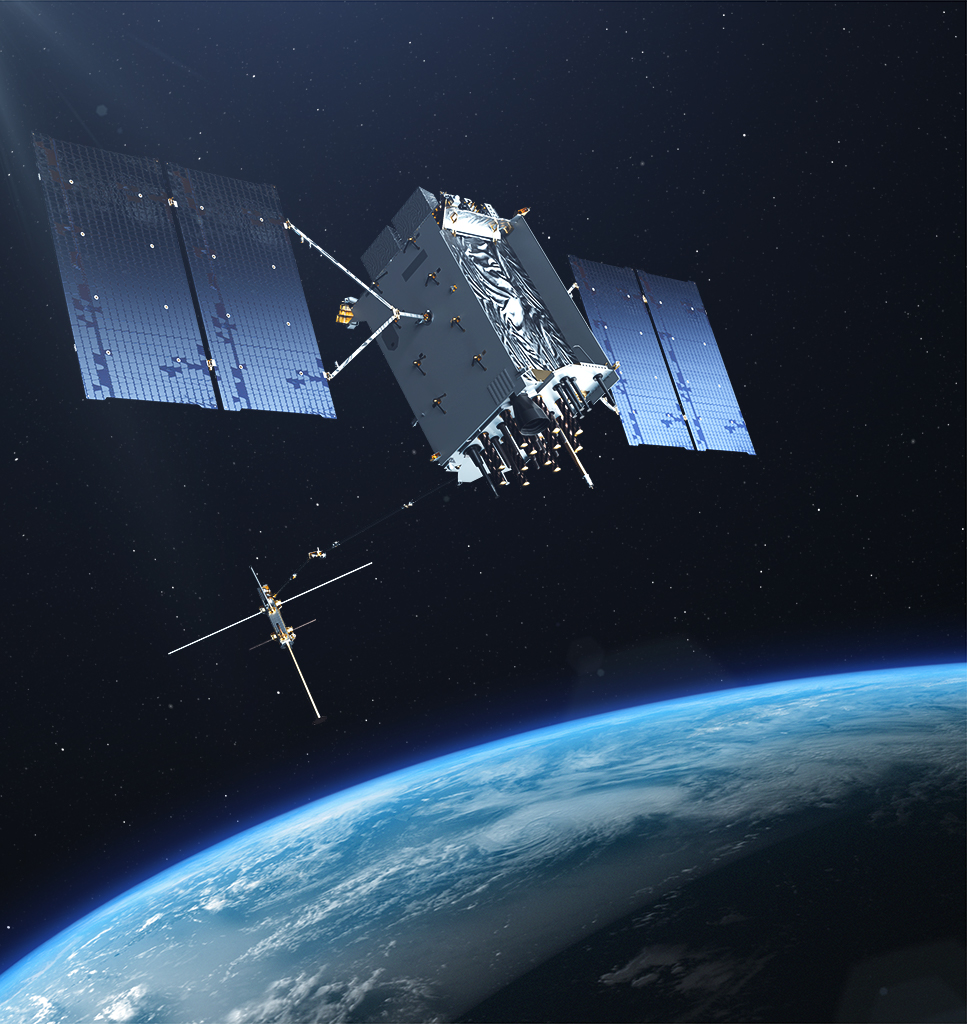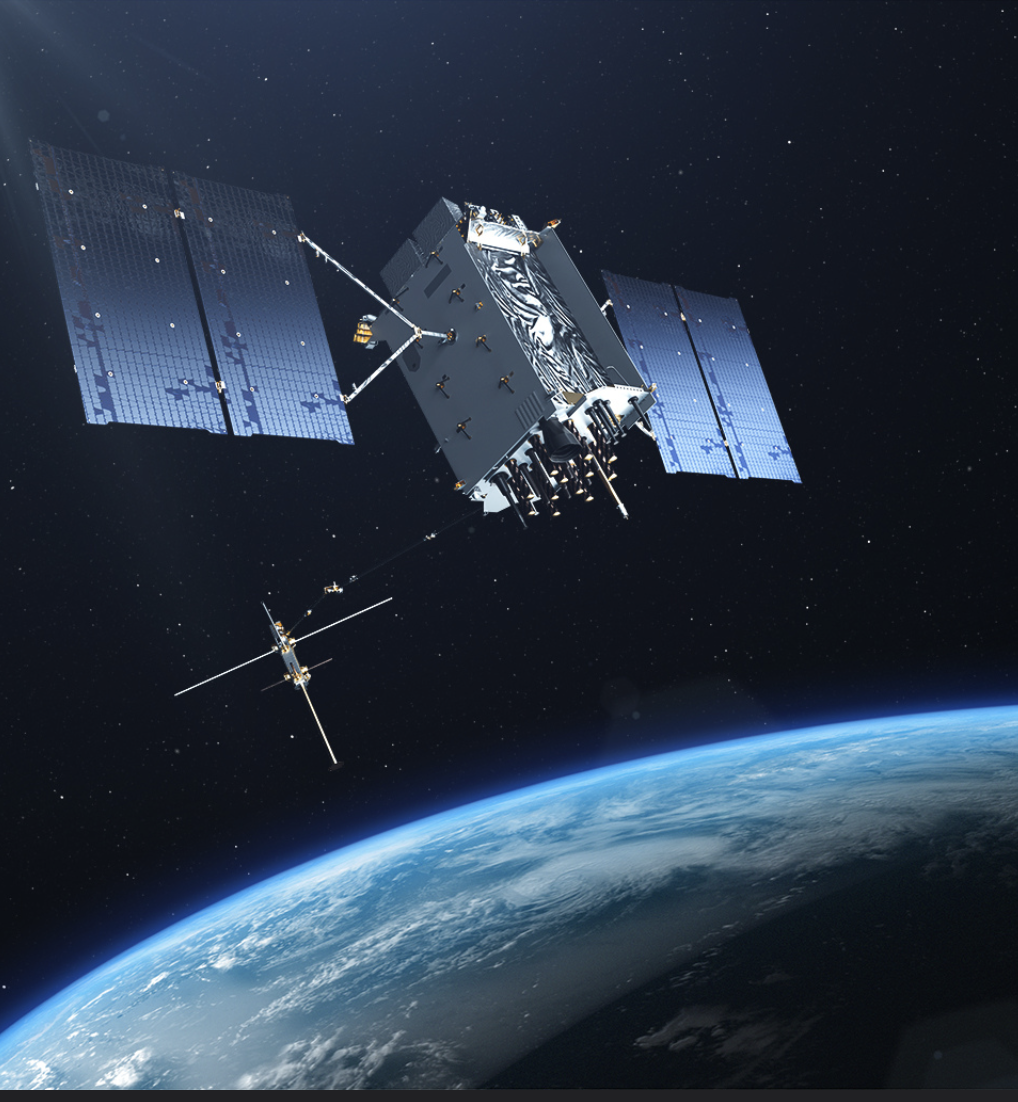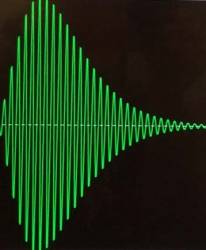[Editor’s Note: This article was written and submitted by Mark Crews and John Betz.]
With the launch of the first next-generation GPS III satellite, GPS III Space Vehicle 01 (GPS III SV01), on December 23, 2018, the Global Positioning System (GPS) took a major step in modernizing technology and capability. The U.S. Air Force has continually improved GPS since the launch of the first GPS Block I satellite in 1978, and this ongoing modernization has provided new signals, greater accuracy, and increased robustness for civil and military users. After the first 10 GPS III satellites are launched over the next few years, up to 22 GPS III Follow-on (GPS IIIF) satellites will provide yet another step increase in GPS capabilities.
GPS III SV01 continues to provide outstanding performance during On-Orbit Checkout and Test. GPS III broadcasts all the signals provided by previous GPS satellite blocks, and these signals have already been verified to maintain backwards compatibility, meaning current GPS receivers will continue to process them as normal. On-orbit tests have verified that the new satellite’s signal performance meets or exceeds all requirements. The satellite has already successfully completed 130 of 146 Test Objectives with the Launch Checkout Capability. GPS III SV01 is on track to transfer to GPS ground control operations later this year. After ground control operational acceptance, the control segment will set GPS III SV01 signals healthy for GPS receivers to use.
GPS III satellites provide significant new capabilities:
- The new L1C signal was designed with international participation to be highly interoperable and compatible with other systems’ open service signals having carrier frequencies of 1575.42 MHz. Its revolutionary signal structure provides greater robustness, higher accuracy in multipath, and features for a range of applications from low-cost consumer devices to high-end professional devices. L1C also delivers greater than 40% more power than the Coarse/Acquisition signal used around the world for decades.
- GPS III M-Code signals deliver higher power to combat jamming in contested environments—more than seven times the power of the P(Y) signal used for military operations today, and more than three times the power of M-Code signals broadcast from Block II satellites.
- All GPS III signals are broadcast with greater accuracy due to enhanced atomic clocks specified to be three times more accurate than previous GPS atomic clocks.
- The GPS III satellite architecture is designed to incorporate new capabilities in the follow-on GPS IIIF program.
GPS IIIF satellites will build on GPS III capabilities by adding three more payloads. One is a Search and Rescue payload to geolocate emergency transponders and provide coordinates for rapid assistance to distressed users. Another new payload is a Laser Retroreflector Array that enables independent ranging and ephemeris verification from surveyed ground sites worldwide. The third payload provides Regional Military Protection that concentrates even higher M-Code signal power in a targeted region—allowing receivers to operate more than 10 times closer to a jammer than with the military signals operational today.
Other new capabilities being considered for insertion on later GPS IIIF satellites include:
- On-orbit signal reprogrammability, enabled in part by a new fully-digital navigation payload, so new signals can be uploaded from the ground segment and broadcast to users.
- Directional crosslinks to improve signal accuracy by allowing more frequent control segment updates of each satellite’s clock and ephemeris data.
- Satellite resiliency upgrades to assure GPS satellites can continue operations in contested conditions.
GPS modernization is ongoing. The second next-generation GPS III satellite, GPS III Space Vehicle 02, is already at Cape Canaveral being prepared for an expected July launch. For the next few years, two to three GPS III satellites will be available for launch each year, followed by GPS IIIF satellites. The GPS III and IIIF satellites will continue GPS’ proud history of providing increasing positioning, navigation and timing capabilities to users worldwide.
Approved for Public Release; Distribution Unlimited. Public Release Case Number 19-1364
©2019 The MITRE Corporation. ALL RIGHTS RESERVED






